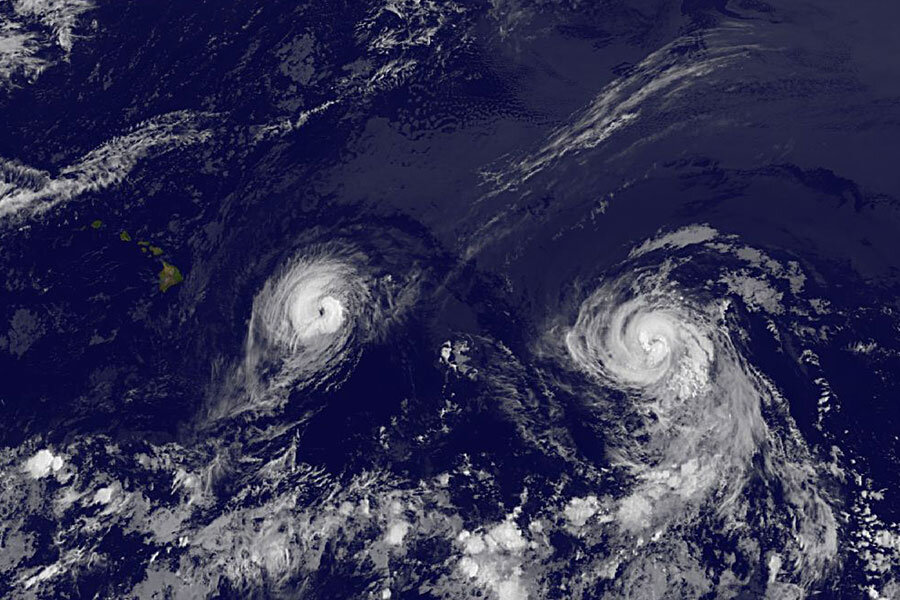Why are more big storms hitting Hawaii?
As a pair of cyclones stream towards the Hawaiian islands, locals are clamoring for bottled water and flashlights, with some no doubt wondering why their archipelago has been experiencing such severe weather in recent years.
The first hurricane in a generation, Category 1 storm Iselle will likely strike Hawaii's Big Island on Thursday evening, bringing 5 to 8 inches of rain, says Tom Birchard, senior meteorologist for the National Weather Service in Honolulu. As of 12 p.m. US Eastern time, it had maximum sustained winds of 80 mph with higher gusts.
Its weaker Category 2 partner, Tropical Storm Julio, could miss the islands by traveling north this weekend. The storms may cause mudslides and severe flooding.
This year has seen a greater frequency and number of cyclones near the islands, says Mr. Birchard, due to the higher ocean temperatures.
Those warmer waters resemble conditions behind El Niño, the periodic appearance of a band warm water and high air pressure that moves eastward across the Pacific Ocean.
"It's been a busier than usual season and we've been wetter than normal and more humid" Brichard says, adding that during the last El Niño season in 1997-1998, the Pacific saw nine tempests ranging in strength from tropical depression to tropical storm, with none hitting the state. "We’re a fairly small target," he said.
As The Monitor reported Wednesday:
On the West Coast, El Niño events can trigger unusually warm air and water temperatures. Climatologists suspect that an El Niño may have been at play in 1858, when the only recorded hurricane ever to hit California battered the coast of San Diego.
It is not yet an El Niño season, as the National Centers for Environmental Protection has yet to make it official, putting it a 70 to 80 percent likelihood. But the possibility of a hurricane striking Hawaii is reminiscent of El Niño, setting records.
Is Hawaii's bad weather exacerbated by climate change? Meteorologists are reluctant to say so.
"Some reports indicate that in a warming climate, there are greater cyclones," Brichard says. "But in a warmer climate, there would be greater vertical wind shear" – or a change in wind speed and direction across a short atmospheric distance, a trend not conducive to stormy weather.
Nonetheless, scientists have observed an uptick in Category 4 and 5 hurricanes worldwide, one that is correlated with increased surface temperatures.
Hawaii has not faced a major hurricane in more than 20 years. The last one, Iniki, which struck the island of Kauai in 1992, killed six people and caused $2.4 billion in damage. That storm developed during the 1991to 1994 El Niño episode.
Before that, the last recorded hurricane to strike directly at the islands was the 1871 Kohala Cyclone.
Some Hawaiians think that the long dry 150-year spell demonstrates that the topography of the big island protects them. But Brichard dismissed the notion.
"It’s led to a false belief that the coastal terrain protects them. But mountains don’t preclude the storms from moving ashore."







